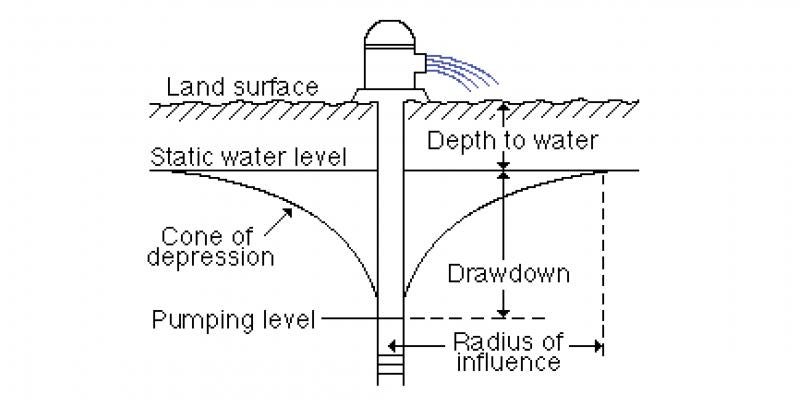Spring 2023 Well Measuring Results

The static water levels of 34 irrigation wells located throughout the Lewis and Clark Natural Resources District (LCNRD) are measured in the spring and fall each year. Groundwater levels measured this spring indicate that the levels have decreased on an overall comparison by 0.7 feet from the spring of 2022 with 22 of the 34 wells monitored showing a decrease.
There are multiple aquifers across LCNRD from where water is pumped for irrigation use including widely distributed sand and gravel, Missouri River Alluvium, Niobrara Bedrock, and Dakota Sandstone aquifers.
In the sand and gravel aquifers all but two of the wells monitored showed a decrease in water levels compared to spring 2022, the average decline was 1.9 feet.
Half of the wells monitored in the Missouri River Alluvium were up and half were down with the overall impact showing an increase of 0.6 feet from the spring of 2022. Wells in the Missouri River Alluvium typically reflect water levels in the Missouri River.
All of the wells in the Niobrara Bedrock Aquifer showed an increase in water levels with an average of 1.5 feet.
The deeply buried Dakota Sandstone Aquifer showed an average increase of 1.3 feet. Recharge impacts to the Dakota Sandstone Aquifer can take several years to be reflected in the water levels.
The 2023 spring water levels, although lower than recent years, remain above the recorded lowest spring levels prior to the drought conditions of 2012. The average water levels for the spring of 2023, considering all wells measured, are 0.4 feet lower than the spring 2013 readings which was the first year after the 2012 drought.
Groundwater levels of irrigation wells are monitored and recorded by the LCNRD to monitor fluctuations in water levels. A downward trend observed over a period of 5 years or a significant decline over 2 years would be considered cause for concern. Increased irrigation demand and decreased recharge from rainfall has the potential to significantly impact groundwater levels in the aquifers of the district. If the lack of rainfall continues and the increased demand for irrigation remains high the potential for continued groundwater decline is high. Adopting wise irrigation practices is important to maximizing crop yields and ensuring sustainable groundwater levels.
